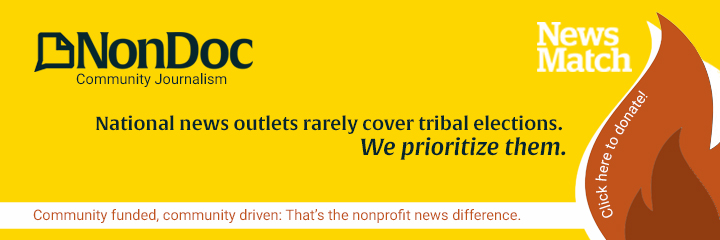In 2007, my favorite journalism course at the University of Oklahoma was investigative reporting, taught by Oklahoma Watch’s Warren Vieth one night a week.
You could say I had a case of senioritis — which the Tulsa World’s Jarrel Wade and I will forever use as an excuse for not finishing an expose on OU grade inflation — but the best thing about Vieth’s class was that he brought renowned journalists from across the country as guest speakers nearly every week.
Early in the semester, Vieth (new to Norman) asked me to recommend a spot for a late dinner and drinks with one of his guests, and I suggested Othello’s on Campus Corner. The location was a hit, and I was in. From then on, I dined with several journalists with more chops in their little fingers than most grocery stores have in their pork sections.
At some point during that semester, conversations about the future of newspapers led me to hypothesize that, perhaps, papers could embrace the emerging “web-first” philosophy by trimming their print days from seven to four, or even three.
In our academic machinations, I suggested that the script could flip … that a publication could publish daily news and commentary on its website and then fill its print product after the fact every other day. The online content could be summarized in conjunction with features, investigative pieces and, of course, the funny pages.
Deborah Nelson, a former Los Angeles Times reporter with many awards to her credit, found the idea particularly intriguing. “Only printing three days a week??” It was a bold idea that she thought deeply about.
At the time, I felt proud and accomplished that my novel concept had caught the attention of Vieth and Nelson, two journalists well worth admiring and who were as worried as anybody about their industry’s changing business model.
Nearly 10 years later, however, I must admit I have a different feeling about my suggestion.
That’s because it has become a reactive reality with dire consequences for American newsrooms, and it hasn’t made digital journalism any easier.
Several major newspapers have dropped their home delivery to only five, four or three days per week.
The OU Daily — the college newspaper at which I worked in 2006 and 2007 — has shifted from printing five times a week to just two.
The Oklahoman, of course, has decided to outsource much of its layout and copy editing. Journalism think tanks are ruminating about bleaker futures for print products. Shrinking newsrooms continue to jeopardize the first draft of history, which papers have traditionally recorded, either in print or online.
The state of journalism
All of this and more was the focus of Last Week Tonight’s recent segment on the state of journalism and the value of newspapers.
The piece, embedded ironically via YouTube above, includes host John Oliver making hilarious jokes and somber observations about an industry near and dear to the hearts (and minds) of any citizen who values being informed.
It’s good, it’s poignant, and it’s worth a watch.
And it’s probably worth noting that readers who want to support Oklahoma Watch’s nonprofit model can “become a sustainer” here.
In a similar sense, those wanting to support NonDoc can be monthly sponsors of our Writers’ Fund.
And if you live within greater Tulsa, The Frontier continues to produce interesting and important stories on the uglier elements of civic processes. They offer a traditional subscription model with certain big stories being free.
Here’s hoping we all survive as the industry keeps adjusting.





















